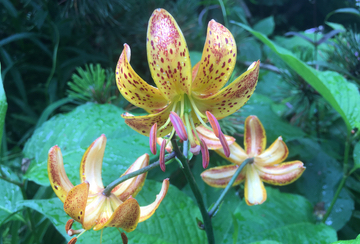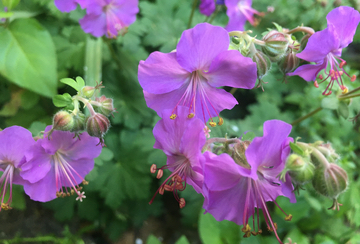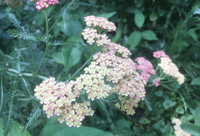
From the Prairie to the Garden

Native species gardens are growing in popularity because they are so ecologically responsible.
Their plants are self sufficient, self-cleaning, and provide solutions for soil run-off and water management as effective as they are beautiful.
Native flowers restore habitat for the wildlife that adapted to use them for food and shelter, bring depleted land to a natural balance, and stabilize unstable soils.
The major selling point of native gardens is they need no maintenance: a mix of coneflowers, goldenrods, asters, bee balms, blazing stars, yarrow, poppies, milkweed, false indigo, and yes, lilies, will run itself indefinitely, blooming year after year indifferent to the whims of the weather and questionable gardening skills.
The only thing they can't do without is full sun exposure.
Here is a small starter native garden with flowers for all seasons: cranesbills, columbines, lupines, and penstemons for spring, daisies, Formosa lilies, coreopsis, blazing stars, coneflowers, and bee balms for summer, turtleheads, obedient plants, asters, and goldenrod for the beginning of fall, and colorful pampas grasses for fall and winter interest.

Designing the Wild

The most common colors for native flowers are white, yellow and purple, and if you intend to recreate the look of a wild meadow, this is the color scheme you should keep in mind.
Meadows don't display apparent hierarchies of height or color; their overall look is that of a flat, colorful, and uniform tapestry. Their feral plants are fierce in defending themselves from dangers with thorns, traps, and active compounds that irritate the skin. Between the thistle scratches, the nettle welts, and the long winding snares of vetches, a wild meadow is meant to be seen, not experienced up close.
Its dwellers' inner mechanisms quietly guide their development, in such a way that the meadow never looks the same from one year to the next. Each season a new species is given the stage to shine, and the other plants keep a low profile, waiting for their turn in the limelight in the future.
It's hard to replicate such a sophisticated large-scale coordination.
The closest the gardener can come to it is to keep reseeding the lot for a few years until the native plants naturalize and their collective entity, the meadow itself, reaches a mature balance.
